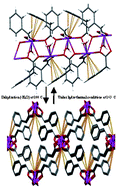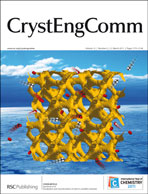Reversible solid state structural transformation of a polyhapto lead(ii) polymeric chain to a tetrahapto lead(ii) two-dimensional network by thermal dehydration with no change in nanoplate morphology†
Abstract
A reversible solid state structural transformation of a new 1D lead(II) coordination


 Please wait while we load your content...
Please wait while we load your content...